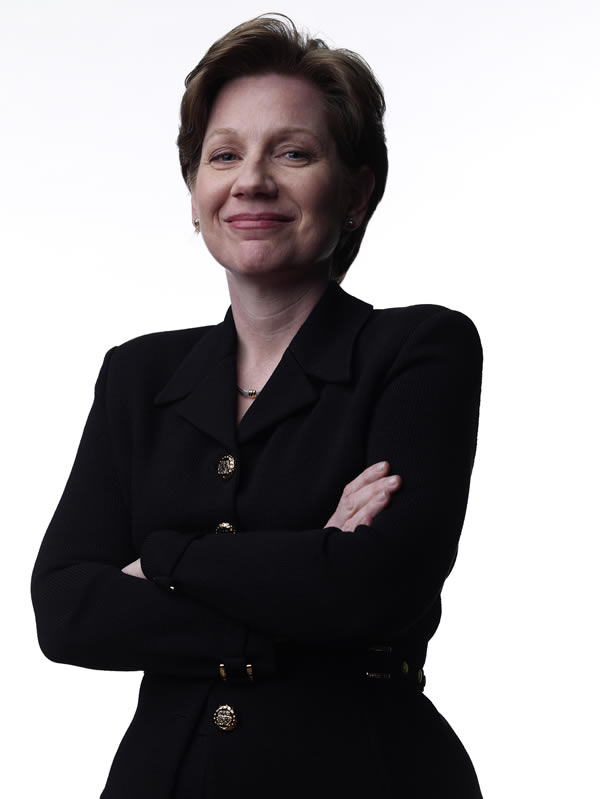In a Chicago elementary school, a young boy was asked to draw a picture of something that he wanted to have one year from now and to write down how much money it would cost. He drew a guinea pig and listed it at $90. Next, he was to draw a picture of something he wanted ten years from now. This time he had a much more creative and lofty goal in mind. He drew a “Boy Store” – a multistory building that included a racetrack and a swimming pool on the roof. The price tag was $100,000.
The concept of short-term and long-term financial goals is just a small example of what children are learning through the Money Savvy Kids program, a basic personal finance curriculum that has been taught to elementary school students within the Chicago Public School system for the last fifteen years. The program is the brainchild of Susan Beacham, CEO of Money Savvy Generation, Inc., and if passion is a necessary ingredient for creating a viable company, then Beacham has got it covered. Combine that with her mission to fill a blatant void in our educational system and our culture—teaching financial literacy to children—and success should come easy, right?
Not so fast. Beacham learned early on that teaching children about money is a topic that can send some adults running for the door. By reducing a complicated issue down to its simplest form, she began to understand the reason that educational systems stop short of implementing financial literacy into their curricula. “Not enough time, not enough confidence, and not enough information,” she explained. “Teachers have a lot on their plate, including the basic skills of reading, writing, and arithmetic that they have to teach. Even the younger students are chock-full of lessons. And many educators felt that managing money is a critical life skill that parents should address,” Beacham said. But, the third reason is where things get really muddy. Beacham, who bills herself as a financial literacy educator, says that each of us bring our own values, beliefs, and behaviors to financial issues. Teachers, like many of us, may feel insecure about their own financial knowledge and practices, and the thought bringing the subject into the classroom can be an intimidating for some.
“Teachers have a lot on their plate, including the basic skills of reading, writing, and arithmetic that they have to teach. Even the younger students are chock-full of lessons. And many educators felt that managing money is a critical life skill that parents should address,” Beacham said. But, the third reason is where things get really muddy. Beacham, who bills herself as a financial literacy educator, says that each of us bring our own values, beliefs, and behaviors to financial issues. Teachers, like many of us, may feel insecure about their own financial knowledge and practices, and the thought bringing the subject into the classroom can be an intimidating for some.
“What we need to ask ourselves is why, if the message isn’t changing and the approach and the tips are not changing, why isn’t the level of success changing? It’s because people bring all this baggage with them. It all gets loaded on to a fairly simple, straightforward language that rarely changes called ‘money.’”
Over the years and particularly since the economic crisis jarred the financial confidence of Americans in 2008, there has been a gradual move towards recognizing the need to equip our next generation with tools they can use to be good stewards of their money. Teachers and parents sense the urgency. And apparently, so do some state governments.
According to a 2014 report by the Council for Economic Education, for the first time in our country’s history all 50 states and the District of Columbia now require economics as apart of K-12 standards. While that shows progress, only 22 states have made economics a required course necessary to graduate from high school. The report also states:
“Improvement has been seen in the area of personal finance course requirements. Four more states require students to take a personal finance course . . . as a high school graduation requirement, bringing the total to 17. However, only 6 states require the testing of student knowledge in personal finance, only one more than in 2011.”
Prior to starting the Money Savvy Generation, Beacham was in the male dominated financial services industry for 18 years working with high net worth families. Often, she was sought after to help women when they were widowed or divorced. “I would get them handed to me so they could learn the language of money at a point of crisis in their lives. This made no sense to me,” said Beacham.
A defining moment came for Beacham when she was working with a woman with four children under ten-years-old whose husband recently died unexpectedly of a heart attack. The young widow had never attended any prior financial meetings with her husband before. It was then Beacham decided that her own two daughters, who were in preschool and kindergarten at the time, were going to learn early on about money so they were prepared to handle financial concerns throughout their lives. Shortly thereafter, Beacham left the corporate world on a mission not only teach her own children about financial literacy, but others as well.
The Money Savvy Kids Basic Personal Finance Curriculum has five levels working within grades Pre-K – 5, and the course material aligns with Common Core State Standards and other national standards. The curriculum is built to make a teacher feel confident about teaching the subject. Scripts, well organized questions and answers, and other well designed materials were created to help best teach young students.
In Beacham’s native Chicago, the program has reached over 250,000 students in the public school system. She credits local government, corporate sponsors, and school administrators and teachers for their dedication in bringing the curriculum to students. Money Savvy Generation also collaborates with the Department of Financial Institutions in Seattle where the curriculum has been taught for years. And it has also been implemented in schools in North Dakota, Washington, Arizona, Indiana, and California.
The company’s flagship product is the Money Savvy Pig and to date, over a million children around the world own one. The idea of the redesigned classic piggy bank came to Beacham in a dream when she was on vacation with her family.
“There is more to do with money than just save and spend, that’s why the Money Savvy Pig is designed with four slots: save, spend, donate, and invest. We teach children how to set goals for each choice in addition to many other things, such as differentiating between wants and needs, and how to make a list and prioritize. Basically we teach how to stop, think, and reflect,”
Beacham explained. One of the most successful exercises is asking children to draw pictures of their short- and long-term goals, as told in the example of the young boy and “The Boy Store.” Parents are asked to partake in the same exercise as it is a window into their child’s mind, and it fosters a dialog on issues of money.
So how did the translucent, four-chambered Money Savvy Pig land in the hands of children around the world? Enter Dr. Phil McGraw, psychologist and talk show host. His influence on his audience doesn’t match the “Oprah effect,” but it’s close.
In 1999, a reporter from the Chicago Tribune had heard that Beacham was teaching children in first and second grades how invest money and found it hard to believe. Beacham invited her to attend the eight- week program that she was teaching at a local elementary school to observe. The reporter took her up on the offer and shortly thereafter wrote an article for the Tribune with the headline, “First Graders Learn How to Invest.”
“Other news outlets noticed. “Money Magazine called us, and USA Today picked the Money Savvy Pig as one of the best products of the year. And then Oprah called—and then Dr. Phil called,” said Beacham. After her second appearance on Dr. Phil, he told Beacham that he wanted to work with her because he believed in her mission to teach financial literacy to young children and teens.
“The way he has helped me is that he has distributed the message over and over again. That episode is evergreen. Every time that show runs we get calls from other countries,” Beacham said explaining the traction from syndication of the Dr. Phil show in the U.S. and abroad. Three years ago, the Money Savvy Pig made it to Japan, and in Columbia they are using the curriculum in their schools, community workshops, and churches. Beacham emphasizes that it is not only the exposure through the Dr. Phil show, but also the ripple effect once the iconic blue pig enters a new market. As more people use it, more people want it.
Based in Lake Forest, Illinois, part of Chicago’s metropolitan area, Beacham cofounded Money Savvy Generation with her husband, Michael, who is president of the company. Together, they recently authored, “O.M.G. Official Money Guide for Teenagers.” When the book was released last December, it received accolades from major media platforms including Time, USA Today, and the Washington Post. Yet, Beacham says that she is most gratified by hearing from the people who are reading the book and actually using the tools. One place she can do that is to visit Amazon.com and read the customer reviews which have earned the book a 4.5 star rating out of 5 stars.
For tweens and young teens, Money Savvy Generation has created Money Savvy U, a course that builds on the principles established in the Money Savvy Kids curriculum. And, the next book in the works is a version of “O.M.G.” for undergrads set to be released next year.
Beacham believes that there are a lot of very good financial literacy solutions available, but also believes that in America, we don’t start teaching early enough. “My question to the industry is why don’t we see more success? I think we don’t see as much success as we should see because we’re starting too late. We’re trying to change behavior instead of mold behavior,” she said. “If you start as early as Pre-K, you’re shaping behavior.”
Susan Beacham - Her dream was to teach children about money.



